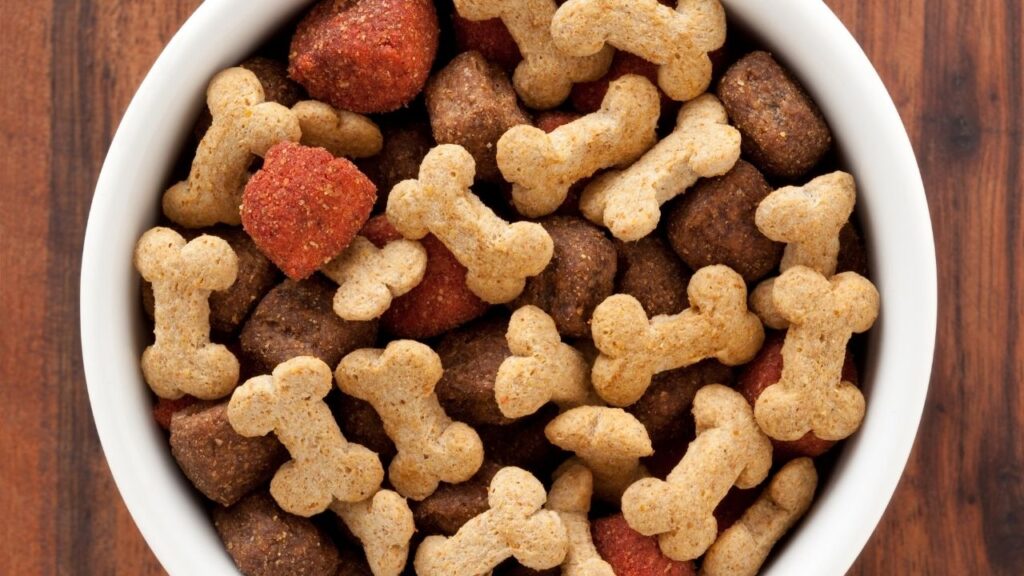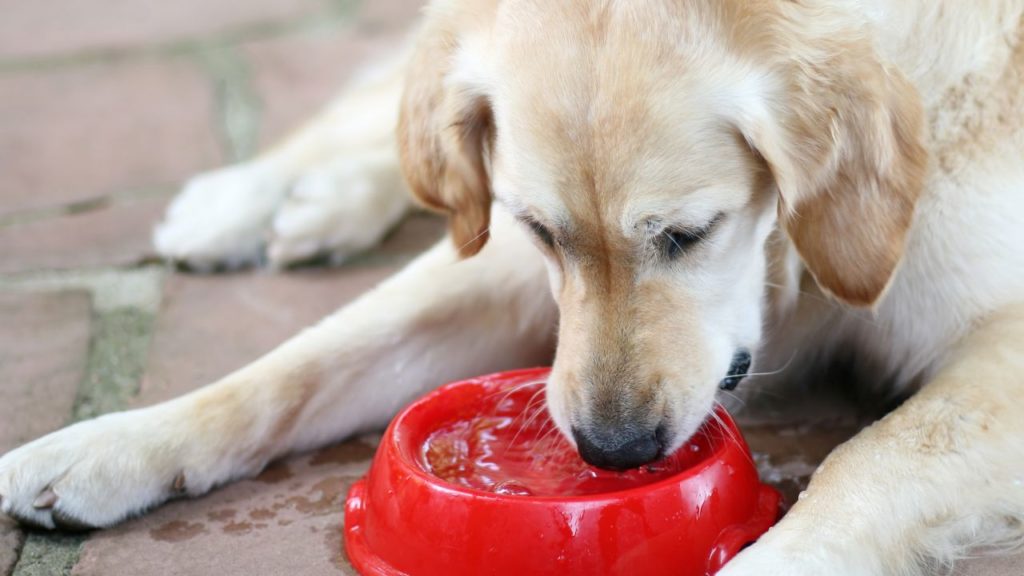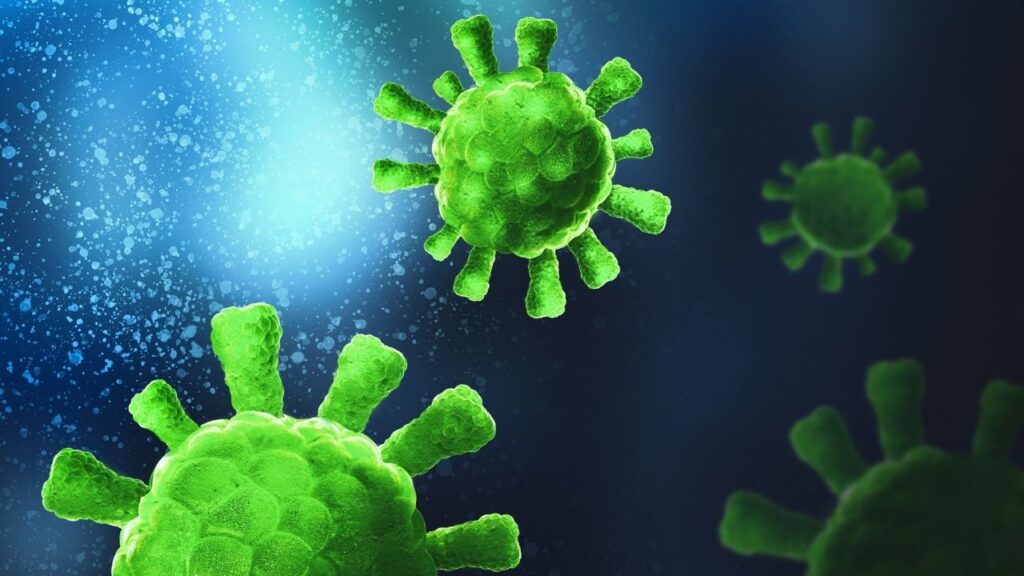The best dog food for cancer prevention is one that helps keep your dog at a healthy weight, provides her with all the essential nutrients she needs, and does not contain potential carcinogens.
Key Takeaways
- Preventing cancer in dogs involves a whole-dog approach that includes keeping your dog at her ideal weight with a balanced diet and regular exercise, avoiding exposure to harmful chemicals and toxins, and providing a stress-free environment.
- An anti-cancer diet for dogs focuses on feeding high-quality, whole foods that are minimally processed and free from artificial preservatives, colors, and flavors. This can include lean proteins, fresh vegetables and fruits, and healthy fats.
- Antioxidant-rich foods, like blueberries, may play a role in cancer prevention, as they can potentially combat cancer-causing free radicals.
- When selecting dog food for a dog with cancer, it’s crucial to consult with your veterinarian to determine the best diet for your dog’s specific needs.
How to Reduce Cancer Risk Using Food
While there is no diet that guarantees your dog won’t get cancer, feeding a diet that keeps your dog at a healthy weight and provides her with all the essential nutrients she needs can reduce the risk of many cancers. Avoiding known carcinogens is another good idea. We will cover a lot of ground in this article.
Nutrition Is Important
Good nutrition benefits every aspect of your dog’s health. Research on dog diets and cancer risk is not as abundant as on the human side, but some of these guidelines should carry over to our dog friends. The American Cancer Society recommends that people focus on a pattern of healthy eating and choosing nutrient-dense foods rather than empty calories.1
Likewise, feeding your dog a consistently healthy diet can help keep your dog at a healthy body weight and reduce some of the risks for certain cancers.
Dogs at different ages and activity levels will require different levels of fats, proteins, carbohydrates, vitamins, and minerals. One of the most important things to consider is being sure that your dog’s diet is complete and balanced. This means that the diet you are feeding your dog has all the essential nutrients your dog needs (complete), and it has those nutrients in the proper proportions (balanced).
Which Diet Is Best?
The best diet to reduce cancer risk using food is one that is healthy, balanced, and given in the right amounts, so your dog stays trim.
If you feed a diet of kibble, choose a high-quality dog food with the recommended proportions of nutrients for your dog’s age and activity levels. You can verify that the food is high quality by asking the manufacturer to provide sources for their ingredients and a full nutrient profile (not just the very limited guaranteed analysis that appears on the bag).
If you prefer to feed a homemade diet, I recommend that you consult a board-certified veterinary nutritionist for recipes that are complete and balanced and formulated for your dog’s specific needs. You can find a board-certified veterinary nutritionist on the American College of Veterinary Nutrition’s website.
Beware of recipes you may find online, particularly if they offer a lot of substitutions, inexact measurements, and no trustworthy advice on supplements,2 as these may not be complete and balanced for your individual dog. There are legitimate websites developed by veterinary nutritionists, such as BalanceIt, where you can formulate your own complete and balanced recipes with your preferred ingredients.
Human Foods You Can Feed Your Dog
There are many foods you eat that you can share with your dog.
Vegetables
A variety of vegetables should be included in your dog’s diet. Not everyone will find it feasible to prepare fresh food for their dogs every day, but there are some economical and time-efficient ways to get healthy vegetables into your dog’s diet.
Dogs usually don’t have the same aesthetic and textural preferences that people do. To save time, you can supplement using trimmings from your own vegetables at dinner time—carrot peels, green bean snaps, or bits of broccoli stem – though these may be easier for your dog to digest if you lightly boil them or toss them in the blender.
Keep in mind that even though vegetables tend to be lower in calories, they do add calories to your dog’s overall intake and any supplementation with vegetables needs to be accounted for. Be sure that your dog is not gaining weight from added vegetables and watch out for any stomach upset when adding supplemental vegetables to your dog’s diet.
Fruits
Adding some fruits into your dog’s diet can boost certain vitamins and minerals, but you must be careful as some fruits are hazardous to your dog. Grapes can be toxic to dogs and others contain pits (like plums, peaches, and nectarines) that can cause an obstruction in the intestines and should not be given whole.
Fruits also tend to contain higher levels of sugar. Just like in humans, this can cause dental problems. Fruit may also be higher in calories and can lead to weight gain.
Some dogs like frozen fruits and vegetables. These can be used to supplement your dog’s kibble-based diet, or used as healthier treats, and can be a more economical way to provide fruits and vegetables in your dog’s diet.
Grains
For most dogs, the fiber found in whole grains serves several healthy functions including:
- Satiety, or making your dog feel full after eating.3
- Benefiting the microbiome in the digestive system.3-6
- Aiding in nutrient absorption.3-6
Wait! Aren’t Grains Bad for Dogs?
There is currently a lot of debate over grain free diets. Many people feel that their dog’s wolf ancestors would not have eaten grains, so their dog shouldn’t either. Interestingly, dogs have evolved many genes to help digest grains,7,9 and there is currently no evidence that grain-free diets are healthier.
It’s important to note that dog food sold as “grain-free” does not necessarily mean carbohydrate-free, as the carbohydrate component is often replaced with other foods like potatoes or lentils. When it comes to cancer, limiting carbs is generally a good idea. Using potatoes or lentils only changes the source of the carbs, it doesn’t eliminate them.
There is also a common concern that grains are a frequent allergen in dogs, but allergies to meat proteins like beef, dairy, and poultry are much more common in dogs.8
Additionally, grain-free diets have recently been implicated in a certain heart disease (dilated cardiomyopathy, or DCM), though the connection between the two is still under investigation. The most up-to-date research suggests pulses (legumes) may be the dietary concern for DCM, not whether dogs are eating grains or not. In other words, perhaps the lentils, peas, and other legumes that are replacing grains are the issue.26
A Balanced Diet to Reduce Cancer Risk
No diet can guarantee that your dog won’t eventually develop cancer, because diet is not the only contributing factor for cancer. However, a balanced diet provides everything the body needs for health in general, and that makes a strong body that is naturally better able to fight cancer.
Choosing a good diet for your dog can be overwhelming as there are countless options and marketing tactics are often misleading. These guidelines from veterinarians at Tuft’s University may be helpful in picking a good food for your dog. The Association of American Feed Control Officials (AAFCO), which sets standards for commercial pet foods, also has excellent resources on its website for understanding pet food labels.
AAFCO Statement
Pet foods should have an AAFCO statement, which is found in required nutritional adequacy statement, and indicates that it meets all the nutritional needs of a dog, how that was determined, and what stage of life the food is intended for.
Consult a Nutritionist
If you prefer to feed your dog a homemade diet, it is important to have a diet formulated by a veterinary nutritionist for your dog’s specific needs. These are veterinarians who have done years of additional training in pet nutrition after finishing veterinary school.
Beware of non-veterinarian people claiming to be “certified” pet nutritionists or specialists. Anyone can receive this type of “certification” from online programs with as little as two weeks of training and without having the knowledge required to understand the unique nutritional needs of dogs of different ages, breeds, activity levels, pregnancy status, or with concurrent health issues.
Nutrient Requirements
Like humans, the major categories of nutrients needed by dogs are protein, fat, carbohydrates, vitamins, and minerals. Each of these nutrients influences cancer risk in different ways.
Protein
Protein is an essential part of your dog’s diet. There are many amino acids that dogs do not synthesize in their bodies – called essential amino acids – so these must come from protein sources in your dog’s diet.
Feeding excess protein is not beneficial but is also unlikely to harm your dog if she is healthy.10 Extra protein in the diet can be harmful in dogs with certain kidney or liver diseases, and higher levels of protein may be needed in the diet of dogs on calorie restriction (i.e. for weight loss) or for dogs with protein-losing diseases.
While there have been no large-scale studies comparing cancer risk between different food types (i.e. dry kibble, canned, human-grade or fresh foods), there is research suggesting that the way proteins in food are cooked is important.
Protein Cooking Methods
Cooking meats at high temperatures can increase levels of the potential carcinogens known as heterocyclic amines (HCAs) and polycyclic aromatic hydrocarbons (PAHs).11 Animal studies have shown HCA’s and PAH’s to be carcinogenic, though the doses used in these studies were far higher than what humans or dogs would consume in their diet.12,13
There is currently no research linking dry kibble directly to cancer risk, but ultra-processed high carbohydrate kibble diet has been linked to irritable bowel disease in dogs.27
When choosing a commercial food, you might consider choosing dog food that is cooked at lower temperatures. Likewise, when preparing food for your dog at home, gently simmering meat would avoid producing these potential carcinogens while also eliminating potentially harmful bacteria.11
Fats
Fats are an essential part of your dog’s diet, though the amount of fat needed in the diet is quite variable depending on your dog’s individual needs. Fat has more calories than either carbohydrates or protein (9 calories per gram versus 4 calories per gram), so a diet higher in fat can be beneficial for some dogs. Dogs that are underweight, highly active (such as hunting dogs or other canine athletes), or that otherwise need a more calorie-dense diet may benefit from a diet higher in fat.
On the other hand, dogs with certain illnesses, like pancreatitis, may require a diet lower in fat. Some dogs simply have trouble digesting higher amounts of fat, requiring them to eat a lower fat diet for optimum health.14
Obesity is one of the main factors we can control to reduce cancer risk. A higher fat diet increases the number of calories in the diet and thus can lead to weight gain. If your dog is naturally low energy, is an obese-prone breed, or tends to gain weight easily, reducing fat in the diet may be helpful,14 as keeping your dog at their ideal weight is one of the best things you can do to reduce cancer risk.
Omega-3 Fatty Acids
Another factor to consider is the different types of fats. Similar to essential amino acids, there are two essential fats that dogs must get through their diet – omega-3 and omega-6 fatty acids.15
These fats could be important in reducing cancer risk, as an imbalance of these fatty acids may contribute to chronic inflammation.15 Like obesity, chronic inflammation is another risk factor for cancer.
Omega-6 fatty acids are used in the body to make molecules it needs for increasing inflammation—a process that is necessary for responding to illness and injury – and omega-3 fatty acids are an essential for ending the inflammatory process when it has done its job.15
Most large-scale dietary studies of omega-6 and omega-3 fatty acids have been performed in humans and have mixed results, due to many uncontrollable variables and the difficulty of assessing the role of a single nutrient in overall health. Many studies have shown no protective effect of omega-3 fatty acids against cancer,16 while others suggest higher omega-3 levels and lower omega-6 to omega-3 ratios are correlated to reduced cancer-related deaths.17
Ratio of Omega-3 to Omega-6
Though we don’t know the exact ratio that is ideal for controlling inflammation, we do know having a lower omega-6 to omega-3 ratio is not harmful and may even be protective. AAFCO approved dog foods must contain an omega-6 to omega-3 ratio at or below 30:1.
For adult dogs, the minimum content of omega-3 fatty acids is determined by the ratio. Omega-6 to omega-3 ratios at 5:1 or 6:1 may offer some reduced risk of cancer and inflammation and are not likely to have negative health effects.18-20
Omega-6 fatty acids are found in vegetable oils, with corn oil being particularly dense in this type of fatty acid. Though omega-3 fatty acids can come from plant or animal sources (cold-water fish and krill), animal sources are superior for dogs. This is because the type of omega-3’s from plant sources must be converted within the body into a more useful form, and this process is not efficient in dogs.15
There are a variety of dosing recommendations for fatty acids. If you want to supplement these, discuss with your veterinarian to determine the proper dosage for your dog. Don’t forget that supplementing with fatty acids will increase your dog’s calorie intake and may require an adjustment to the amount of other foods your dog eats.
Carbohydrates
Simply put, carbohydrates fall into one of two categories:
- Starches and sugars that are digestible.
- Fiber which is not digestible.
Carbohydrates in dog foods largely come from plant sources. They can be an excellent source of energy, as well as providing necessary vitamins and minerals. Dogs can tolerate up to 75% of calories from carbohydrates,20 and this may be especially important if they have medical conditions requiring lower amounts of fats or proteins.
Unlike in people, there is no evidence that a high carbohydrate diet increases the risk of developing diabetes in dogs. Your veterinarian may recommend reducing carbohydrate intake in a dog that has already been diagnosed with diabetes21 to help regulate their blood sugar levels.
Because it is not digested, fiber is not an energy source for dogs, but it still is an important part of the diet that has many benefits. The normal microbiome in the dogs’ gastrointestinal (GI) tract – the so-called “good” bacteria – can ferment some types of fiber into an energy source for themselves and for the cells lining the GI tract.3
Fiber can also affect stool quality and regularity, help with weight loss, and help manage high cholesterol and triglycerides.3
Vitamins and Minerals
Just like humans, there are many essential vitamins and minerals dogs need in their diet for good health. High quality commercial dog foods will provide all the essential vitamins and minerals your dog needs.
Your dog should not need supplemental vitamins and minerals unless recommended by a veterinarian for a specific purpose. In fact, some vitamins can cause illness when given in excess. For example, unlike humans, dogs make their own vitamin C and if given in excess, can cause calcium oxalate stones to develop in the urinary system.
If you prefer to feed your dog a homemade diet, you will likely need to supplement certain vitamins and minerals to make a complete and balanced food for your dog. Recipes formulated by a board-certified veterinary nutritionist or using a legitimate diet formulator, like BalanceIT, should include recommendations for supplements that provide all the needed vitamins and minerals in the correct amounts.
Getting the Most Out of Your Dog Food
If you are feeding your dog a commercial diet, be aware that some nutrients can degrade over time. To keep your dog’s food fresh, follow the storage instructions: keep the food in a cool, dry location, well-sealed in its original bag, or in an airtight container which is cleaned between uses.
Even if you transfer the food to another container, it is recommended to keep the original bag until all of the food is gone, in case of recall or other problems with the food.
If you are feeding a homemade diet, make sure you are supplementing with the correct amounts and that you are storing supplements as instructed.
Supplements
A lot of supplements are usually marketed by boasting about their health-promoting qualities, such as cancer prevention. This industry is poorly regulated, however, and few of these have any actual evidence to back up these claims.
If you do want to give your dog supplements, please discuss them with your veterinarian to be sure they are safe for your individual dog. Remember that excesses of some vitamins and minerals can be dangerous and lead to other health problems. I also recommend starting only one supplement at a time, so that if your dog has a negative reaction to it (such as vomiting or diarrhea), it is easier to determine what caused the reaction.
Let’s look at a couple of types of supplements that are popularly recommended in a bit more detail.
Apoptogens
Apoptosis is part of the body’s normal maintenance – a natural process to get rid of aging, damaged, or abnormal cells. For cancers to develop, these cancer cells must develop the ability to avoid apoptosis.
A big focus of cancer research is how to induce apoptosis in cancer cells, without causing the death of healthy cells. Substances which can trigger apoptosis are sometimes called apoptogens.
Some apoptogens found in common foods include:
- Luteolin – found in fruits, vegetables, and herbs.22
- Curcumin – the primary bioactive substance in turmeric.22,23
- Apigenin – found in a variety of plants.22
These have been shown to trigger apoptosis in cancer cells,22 making them a well-tolerated adjunct treatment for some cancers.
It is unknown whether including apoptogens in the diet can reduce cancer risk in otherwise healthy dogs, but side effects are rare and mild,22 so they can be safely considered as a supplement for your healthy dog.
Antioxidants
Antioxidants are chemicals that can neutralize free radicals – other chemicals that can damage cells and potentially lead to cancer development – and these are both produced in the body and obtained from the diet.24
Some antioxidants obtained from the diet include:
- Vitamins A, C, and E
- Beta-carotene
- Lycopene
It was long thought that large doses of antioxidants may protect against or even treat cancers; however, some large and long-term studies have since found either no effect, limited benefits, or even higher rates of cancer with taking large doses of supplemental antioxidants.
It is now thought that low, supplemental doses may be beneficial for cancer patients. It is recommended that most antioxidants come from the diet or a multivitamin with normal, low levels of antioxidants.25
The Bottom Line on Reducing Cancer Risk with Food
It’s important to remember that while diet is important for health in general, a healthy diet alone cannot completely prevent cancer from developing, because cancer is a multi-factorial disease. Many things need to go wrong for cancer to develop, take root, and grow. Diet is only part of the equation.
That said, a healthy diet is the foundation for a healthy body in general. Regardless of whether you feed kibble or homemade fresh foods, a complete and balanced diet of high-quality foods and keeping your dog at a healthy weight is your dog’s best bet for cancer prevention through diet.
- Kushi LH, Doyle C, McCullough M, et al. American Cancer Society Guidelines on nutrition and physical activity for cancer prevention: reducing the risk of cancer with healthy food choices and physical activity. CA Cancer J Clin. 2012;62(1):30-67. doi:10.3322/caac.20140
- Heinze CR. When less is more: Sensible use of supplements. Clinical Nutrition Service at Cummings School. https://vetnutrition.tufts.edu/2018/11/sensible-use-of-supplements/. Published March 16, 2022. Accessed February 8, 2023.
- Heinze CR. When less is more: Sensible use of supplements. Clinical Nutrition Service at Cummings School. https://vetnutrition.tufts.edu/2019/11/fiber-frustrations/. Published November 4, 2019. Accessed February 6, 2023.
- Vecchiato CG, Golinelli S, Pinna C, et al. Fecal microbiota and inflammatory and antioxidant status of obese and lean dogs, and the effect of caloric restriction. Front Microbiol. 2023;13:1050474. Published 2023 Jan 12. doi:10.3389/fmicb.2022.1050474
- Phungviwatnikul T, Lee AH, Belchik SE, Suchodolski JS, Swanson KS. Weight loss and high-protein, high-fiber diet consumption impact blood metabolite profiles, body composition, voluntary physical activity, fecal microbiota, and fecal metabolites of adult dogs. J Anim Sci. 2022;100(2):skab379. doi:10.1093/jas/skab379
- Phungviwatnikul T, Valentine H, de Godoy MRC, Swanson KS. Effects of diet on body weight, body composition, metabolic status, and physical activity levels of adult female dogs after spay surgery. J Anim Sci. 2020;98(3):skaa057. doi:10.1093/jas/skaa057
- Arendt M, Cairns KM, Ballard JW, Savolainen P, Axelsson E. Diet adaptation in dog reflects spread of prehistoric agriculture. Heredity (Edinb). 2016;117(5):301-306. doi:10.1038/hdy.2016.48
- Witzel Rollins A. Grain-free diets: What’s the hype?-dvm360. DVM 360. https://www.dvm360.com/view/grain-free-diets-what-s-hype. Published September 21, 2020. Accessed February 4, 2023.
- Frantz LAF, Bradley DG, Larson G, Orlando L. Animal domestication in the era of ancient genomics. Nat Rev Genet. 2020;21(8):449-460. doi:10.1038/s41576-020-0225-0
- Heinze CR. When less is more: Sensible use of supplements. Clinical Nutrition Service at Cummings School. https://vetnutrition.tufts.edu/2018/11/sensible-use-of-supplements/. Published March 16, 2022. Accessed February 8, 2023.
- Pérez-Calvo E, Castrillo C, Baucells MD, Guada JA. Effect of rendering on protein and fat quality of animal by-products. J Anim Physiol Anim Nutr (Berl). 2010;94(5):e154-e163. doi:10.1111/j.1439-0396.2010.00998.x
- Chemicals in meat cooked at high temperatures and cancer risk. National Cancer Institute. https://www.cancer.gov/about-cancer/causes-prevention/risk/diet/cooked-meats-fact-sheet. Published July 11, 2017. Accessed February 8, 2023.
- Freeman LM, Chandler ML, Hamper BA, Weeth LP. Current knowledge about the risks and benefits of raw meat–based diets for dogs and cats. AVMA. https://avmajournals.avma.org/view/journals/javma/243/11/javma.243.11.1549.xml. Published December 1, 2013. Accessed February 8, 2023.
- Heinze C. The skinny on fat: Part 1 – the basics. Clinical Nutrition Service at Cummings School. https://vetnutrition.tufts.edu/2018/03/the-skinny-on-fat-part-1/. Published March 16, 2022. Accessed February 8, 2023.
- Heinze CR. The skinny on fat: Part 2 – essential fatty acids and inflammation. Clinical Nutrition Service at Cummings School. https://vetnutrition.tufts.edu/2018/04/essential-fatty-acids-and-inflammation/. Published March 16, 2022. Accessed February 8, 2023.
- MacLean CH, Newberry SJ, Mojica WA, et al. Effects of omega-3 fatty acids on cancer risk: a systematic review [published correction appears in JAMA. 2006 Apr 26;295(16):1900]. JAMA. 2006;295(4):403-415. doi:10.1001/jama.295.4.403
- Zhang Y, Sun Y, Brenna JT, Shen Y, Ye K. Higher ratio of plasma omega-6/omega-3 fatty acids is associated with greater risk of all-cause, cancer, and cardiovascular mortality: a population-based cohort study in UK Biobank. Preprint. medRxiv. 2023;2023.01.16.23284631. Published 2023 Jan 18. doi:10.1101/2023.01.16.23284631
- de Santiago MS, Arribas JLG, Llamas YM, Becvarova I, Meyer H. Randomized, double-blind, placebo-controlled clinical trial measuring the effect of a dietetic food on dermatologic scoring and pruritus in dogs with atopic dermatitis. BMC Vet Res. 2021;17(1):354. Published 2021 Nov 19. doi:10.1186/s12917-021-03063-w
- de Santiago MS, Arribas JLG, Llamas YM, Becvarova I, Meyer H. Randomized, double-blind, placebo-controlled clinical trial measuring the effect of a dietetic food on dermatologic scoring and pruritus in dogs with atopic dermatitis. BMC Vet Res. 2021;17(1):354. Published 2021 Nov 19. doi:10.1186/s12917-021-03063-w
- Magalhães TR, Lourenço AL, Gregório H, Queiroga FL. Therapeutic Effect of EPA/DHA Supplementation in Neoplastic and Non-neoplastic Companion Animal Diseases: A Systematic Review. In Vivo. 2021;35(3):1419-1436. doi:10.21873/invivo.12394
- Heinze C. Carb confusion part 1: The role of carbohydrate in pet foods. Clinical Nutrition Service at Cummings School. https://vetnutrition.tufts.edu/2021/07/the-role-of-carbohydrate-in-pet-foods/. Published March 16, 2022. Accessed February 4, 2023.
- Dressler D, Ettinger S. Nutraceuticals. In: The Dog Cancer Survival Guide: Full Spectrum Treatments to Optimize Your Dog’s Life Quality and Longevity. Maui, HI: Maui Media, LLC; 2011:155-156.
- Hewlings SJ, Kalman DS. Curcumin: A Review of Its Effects on Human Health. Foods. 2017;6(10):92. Published 2017 Oct 22. doi:10.3390/foods6100092
- Antioxidants and cancer prevention. National Cancer Institute. https://www.cancer.gov/about-cancer/causes-prevention/risk/diet/antioxidants-fact-sheet. Accessed February 8, 2023.
- Dressler D, Ettinger S. Free Radicals. In: The Dog Cancer Survival Guide: Full Spectrum Treatments to Optimize Your Dog’s Life Quality and Longevity. Maui, HI: Maui Media, LLC; 2011:91-94.
- Freeman LM. Diet-associated dilated cardiomyopathy: The cause is not yet known but it hasn’t gone away. Clinical Nutrition Service at Cummings School. https://vetnutrition.tufts.edu/2023/02/diet-associated-dilated-cardiomyopathy-the-cause-is-not-yet-known-but-it-hasnt-gone-away/. Published February 7, 2023. Accessed April 24, 2023.
- Hemida M, Vuori KA, Moore R, Anturaniemi J, Hielm-Björkman A. Early life modifiable exposures and their association with owner reported inflammatory bowel disease symptoms in adult dogs. Frontiers. https://www.frontiersin.org/articles/10.3389/fvets.2021.552350/full. Published January 4, 2021. Accessed April 24, 2023.
Topics
Did You Find This Helpful? Share It with Your Pack!
Use the buttons to share what you learned on social media, download a PDF, print this out, or email it to your veterinarian.






